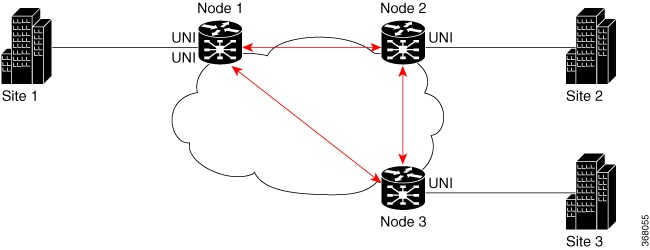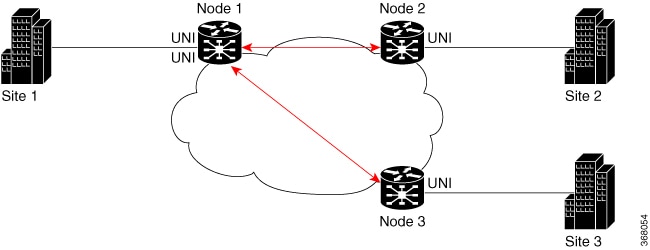EVPN Overview
Ethernet VPN (EVPN) is a solution that provides Ethernet multipoint services over MPLS networks. EVPN operates in contrast to the existing Virtual Private LAN Service (VPLS) by enabling control-plane based MAC learning in the core. In EVPN, PEs participating in the EVPN instances learn customer MAC routes in control-plane using MP-BGP protocol. Control-plane MAC learning brings a number of benefits that allow EVPN to address the VPLS shortcomings, including support for multihoming with per-flow load balancing.
EVPN provides the solution for network operators for the following emerging needs in their network:
-
Data center interconnect operation (DCI)
-
Cloud and services virtualization
-
Remove protocols and network simplification
-
Integration of L2 and L3 services over the same VPN
-
Flexible service and workload placement
-
Multi-tenancy with L2 and L3 VPN
-
Optimal forwarding and workload mobility
-
Fast convergence
-
Efficient bandwidth utilization
EVPN Benefits
The EVPN provides the following benefits:
-
Integrated Services: Integrated L2 and L3 VPN services, L3VPN-like principles and operational experience for scalability and control, all-active multihoming and PE load-balancing using ECMP, and enables load balancing of traffic to and from CEs that are multihomed to multiple PEs.
-
Network Efficiency: Eliminates flood and learn mechanism, fast-reroute, resiliency, and faster reconvergence when the link to dual-homed server fails, optimized Broadcast, Unknown-unicast, Multicast (BUM) traffic delivery.
-
Service Flexibility: MPLS data plane encapsulation, support existing and new services types (E-LAN, E-Line), peer PE auto-discovery, and redundancy group auto-sensing.
EVPN Modes
The following EVPN modes are supported:
-
Single-homing - Enables you to connect a customer edge (CE) device to one provider edge (PE) device.
-
Multihoming - Enables you to connect a customer edge (CE) device to more than one provider edge (PE) device. Multihoming ensures redundant connectivity. The redundant PE device ensures that there is no traffic disruption when there is a network failure. Following are the types of multihoming:
-
Single-Active - In single-active mode only a single PE among a group of PEs attached to the particular Ethernet-Segment is allowed to forward traffic to and from that Ethernet Segment.
-
All-Active - In all-active mode all the PEs attached to the particular Ethernet-Segment is allowed to forward traffic to and from that Ethernet Segment.
-
EVPN Restrictions
When paths of different technologies are resolved over ECMP, it results in heterogeneous ECMP, leading to severe network traffic issues. Don’t use ECMP for any combination of the following technologies:
-
LDP.
-
BGP-LU, including services over BGP-LU loopback peering or recursive services at Level-3
-
VPNv4.
-
6PE and 6VPE.
-
EVPN.
-
Recursive static routing.













































 Feedback
Feedback